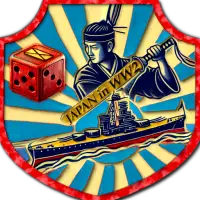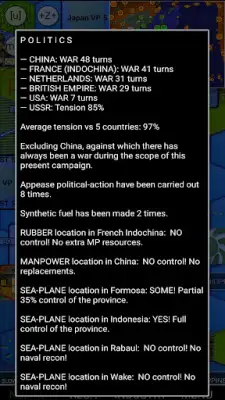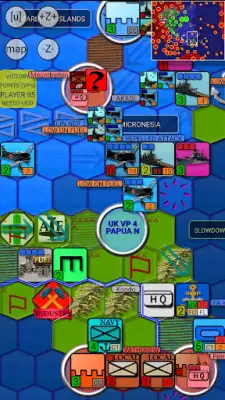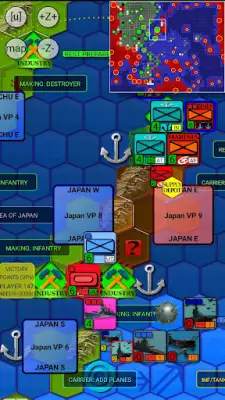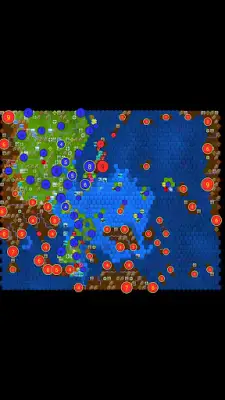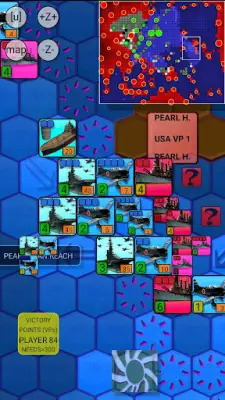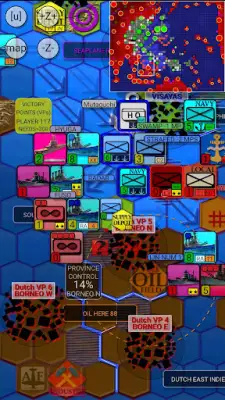Latest Version
1.1.0.7
August 23, 2025
Joni Nuutinen
Game Strategy
Android
0
$3.99
com.cloudworth.japanww2
Report a Problem
More About Japan in WW2: Pacific Expanse
This application places players in the powerful role of shaping Japan's strategic decisions during World War II in the Pacific Theater. The game emphasizes the importance of resource management, military planning, and diplomacy as you lead Japan's expansion efforts. Players must navigate complex choices such as declaring war on global powers, managing industrial production, and deploying a formidable navy composed of battleships and aircraft carriers. The aim is to dominate the Pacific region while balancing the risks of resource scarcity and international opposition.
A key aspect of the game involves managing both military operations and economic resources. You will carry out multiple landings on various islands, each presenting unique challenges, similar to mini-games. The game begins with Japan only at war with China, but as conflicts escalate, diplomatic threats and appeasement become relevant. Players must decide what industries to develop, whether to focus on fuel production for navy and air units, or to expand land forces and naval fleets depending on available resources. Infrastructure development, such as building railways and securing shipping lanes, plays a vital role in maintaining supply lines, especially as distant islands become more difficult to defend and resource-dependent.
Strategic logistics and long-term planning are critical in this scenario. As Japan expands across the Pacific, maintaining supply chains becomes increasingly difficult against hostile nations. For instance, seizing resource-rich islands like Papua-New-Guinea offers industrial opportunities, but also exposes the player to rebellion or attacks from enemies like the United States. Players must weigh whether to reinforce and defend such distant territories or accept temporary losses. Fuel management, including oil fields and synthetic fuel production, is essential for sustaining naval operations, air campaigns, and ground forces, adding an extra layer of complexity to the strategic decisions players face.
The game vividly illustrates the tense geopolitical atmosphere of WWII, with key moments such as British landings threatening critical oil fields or American advances seizing strategic islands like Saipan and Guam. These developments force players to adapt their plans dynamically, balancing offensive actions with defensive sustainability. The underlying narrative echoes Japan’s desperation as expressed by political leaders, highlighting the harsh realities of wartime decision-making. Overall, players are challenged to outmaneuver their opponents and manage a delicate balance of military might, resource scarcity, and diplomatic threats to become the dominant power in the Pacific.
Rate the App
User Reviews
Popular Apps










